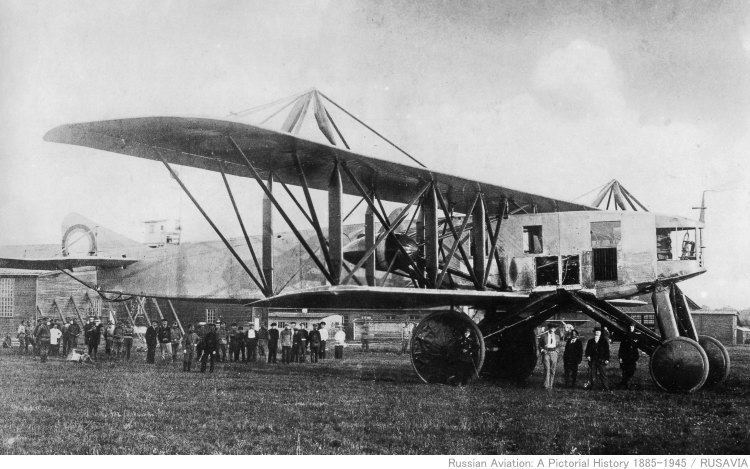Top speed 100 km/h Length 21 m | Wingspan 36 m | |
 | ||
Slesarev svyatogor
The Svyatogor (Russian: Святого́р) was a large experimental Russian aircraft, constructed by Vasily Slesarev in 1916. The aircraft was named after the mythological hero Svyatogor.
Contents
Development
The work on the Svyatogor began in 1913. It was a large wooden biplane, with wings and fuselage covered in fabric. The aircraft was propelled by two large propellers, 6 meters in diameter. Everything on the aircraft was oversized, the nose wheel was 1.5 meter in diameter and the four rear wheels were 2 meters in diameter. The engines were placed inside the fuselage to allow access during flight.
The aircraft awoke much interest, but failed to receive funding before World War I. In desperate need of aircraft, the project was given a 100,000 rubles funding by E.M. Malynsky and production started in December 1914.
As suitable engines were hard to come by, Slesarev tried to mount some that had been taken from a downed Zeppelin. He contacted the French when this did not work out, and received some Renault engines, which could produce 220 hp. These arrived in January 1916. Despite being without money, the construction of the revised design continued. The project stalled, however, with the transmission problems and the death of Slesarev in 1921.
Specifications
Data from
General characteristics
Performance
